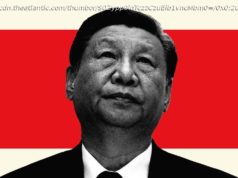Beijing and local authorities have quelled protests and dissent to shape a place with more distinctly Chinese characteristics.
It was a quiet weekend in Tseung Kwan O. Toddlers kicked footballs on the grass outside the Hong Kong Velodrome; runners plodded through the muggy June air; teenagers languidly practiced kick-flips in the skate park: all standard scenes in this suburban new town, about 30 minutes by subway from Hong Kong’s central business district. If you’d left in early 2019 and returned in 2021, it would seem as if nothing had changed (other than the near-ubiquitous adoption of face masks). To all surface appearances, life has continued without a ripple. There is barely a hint of the tsunami that swept through this city, during two years that transformed everything. On July 1, Hong Kong marks a triple anniversary: 100 years since the founding of the Chinese Communist Party, which negotiated the return of the former British colony to the motherland in 1997; 24 years since that handover happened; and one year since a national security law took effect that has irrevocably altered the city. Hong Kong may be no more than a significant footnote in the story of China’s rise; the city’s economy has dwindled in relative importance as the country’s economy expanded 15-fold since the handover to become the world’s second largest. It bears studying, though. Hong Kong’s fate has lessons for the world, not least on the fragility of a liberal way of life and institutions in the face of autocratic determination. China’s authorities and their appointed representatives who run the Hong Kong government would have looked with approval on the placid scenes last weekend. They feed into Beijing’s chosen narrative, which runs broadly as follows: Hong Kong’s pro-democracy protests were a plot fomented by hostile foreign forces to subvert China’s socialist system, while the national security law ended the chaos, restored stability and is gaining support from the city’s people. There are several problems with this version of events. First, it gets cause and effect exactly back to front — rather than an unprovoked challenge to Beijing, the protests were a reaction to a creeping erosion of freedoms that were supposedly guaranteed under “one country, two systems.” Second, claims of public support are dubious: Hong Kong voters delivered a landslide victory to the opposition camp in the last free elections to be held, in late 2019, in a clear demand for less rather than more interference by the central government. And third, while the protests have ended, this reflects more the power of intimidation than any restoration of harmony. Tseung Kwan O played a largely peripheral role in the 2019 unrest, though it was hardly spared. The velodrome park and its adjoining housing estates are ringed by a series of pedestrian and bicycle tracks, linked by underpasses. Virtually all were transformed into Lennon walls during the protests, emblazoned with anti-government posters, slogans and graffiti (plus the occasional pro-establishment message).






